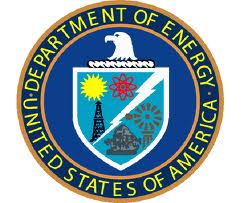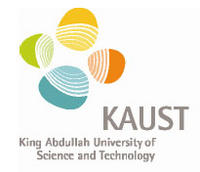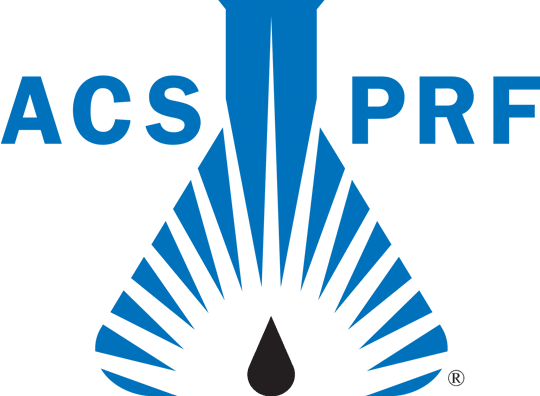Current funding and projects
 |
Carbon Cycle in Small Ocean WorldsPI: Julie Castillo-Rogez (Jet Propulsion Laboratory) Ocean worlds are of significant interest for finding life in the solar system, since some dwarf planets or icy moons show clear evidence of water-rock chemistry, a past or present liquid water ocean, and geochemical disequilibria that may be able to support life through hydrothermal processes. Developing methods for detection of organic molecules that are also found in terrestrial biology is one method for trying to identify whether or not life is present on these worlds, and organics have already been detected on the surface of Ceres and in the plumes of Enceladus. Publications: coming |
 |
Multi-phase melt percolation during core formationCo-I: Masha Prodanovic (Petroleum and Geosystems Engineering, University of Texas at Austin) Chemical differentiation in planetesimals in the early solar system leads to melting of both metallic and silicate phases. The segregation of these melts with opposite buoyancy occurs either in a compacting porous medium or in a magma ocean. The process of core formation imprints distinct geochemical signatures on the differentiated body and affects the thermal history of the planetesimal and therefore the cooling history of the core. Hypotheses about the latter will become testable for the first time with the upcoming NASA mission to metal asteroid 16 Psyche. To determine the timing of core formation in planetesimals we propose to improve the description of simultaneous metal and silicate melt percolation in a compacting porous medium. The dynamics of this process involve a complex coupling across the scales. The large-scale redistribution of energy and mass depends on pore-scale interactions between the two melts. Therefore, we propose the development of novel a multiscale model, where the constitutive laws for the macroscopic evolution equations are determined by pore-scale simulations. Publications: coming |
 |
New constraints on thermal evolution, thermal structure and magmatism on asteroidsPI: Nick Dygert (Earth and Planetary Sciences, University of Tennessee at Knoxville) Models of the thermal evolution of chondritic and achondritic meteorite parent asteroids are predicated on geothermometric estimates of peak temperatures achieved on those bodies. Thermal models inform our understanding of metamorphism and differentiation on meteorite parent bodies and the planetesimals that accreted to form the planets. However, geothermometers used to constrain the thermal evolution of asteroids typically record blocking temperatures during cooling rather than peak or magmatic temperatures. Recently, a rare earth element (REE)-in-two pyroxene thermometer was developed which relies on the relatively slow diffusive exchange of REEs between coexisting pyroxenes and has been shown to record near-peak or magmatic temperatures for samples from a variety of geologic settings in Earth’s mantle and crust. Applications of the REE-in-two pyroxene thermometer to meteorites are extremely limited. A preliminary proof-of-concept study presented here suggests the LL chondrite parent body cooled at a rate >1°C/y from a temperature of ~950°C, implying that it was catastrophically fragmented and quenched from its peak metamorphic temperature. In contrast to our results, cooling rates estimated using methods sensitive to low temperature cooling (i.e., at temperatures <500°C) are orders of magnitude slower, suggesting that subsequent to breakup the LL chondrite parent body reaccreted and then cooled slowly while 26Al or another heat source was still active. This preliminary result demonstrates the power of the REE-in-two pyroxene thermometer to unravel high temperature cooling histories of meteorites, breathing new life into samples studied extensively in the past. Publications: Lukas et al. (2020), Ren et al. (202X) |
 |
Simulation of Multiphase Flow and Transport in the Partially Molten Mantle [NSF link]PI: Todd Arbogast (Institute of Computational Engineering and Science, University of Texas at Austin) Project objectives include the development of (1) a mathematical framework for computational simulation of evolving mantle flow which covers the degenerate case of no melt, (2) a numerical method to accurately approximate the transport of temperature and chemical components within the mantle flow, (3) a computer code to implement the flow and transport algorithms, as well as a method for handling simple phase behavior. Furthermore, (4) the code will be applied to study important problems in the geosciences and (5) students will be educated and trained in an interdisciplinary setting. Mathematically speaking, because there are regions with no melt, two-phase flow in the mantle is governed by highly degenerate equations. Recent work has established the mathematical foundations of two-phase flow when the porosity does not evolve. The key is to scale the solution variables and equations appropriately by the porosity, which is the volume fraction of melt. The evolving case will be treated in this project, with the goal of providing an appropriate computational method for simulating the flow in practical simulations. To model the transport of temperature and the segregation of melt components, appropriate WENO and discontinuous Galerkin methods will be developed for this project, which will respect the possible degeneracies in the porosity. Publications: Hesse & Castillo-Rogez (2019), Raymond et al. (2020), Hesse et al. (202X) |
 |
Bayesian framework for optimal management of waste injection [NSF link]PI: Omar Ghattas (Institute of Computational Engineering and Science, University of Texas at Austin) The focus of the proposed work is on integrating research developments in scientific computing, statistical analysis, and numerical analysis to provide a common platform for waste water storage. Results from this work will be important to energy production in the US, an area of National interest. Geological carbon storage faces two main challenges: the risk of inducing seismicity, and leakage of the injected CO2 into potable aquifers. The characterization of the injection site and continued monitoring of the CO2 migration as well as stress changes in the region of elevated pressure are therefore particularly important to maximize the amount of CO2 that can be stored, while ensuring the long term safety of storage sites. To address these challenges, the overall goal of the proposed research is to (1) integrate well pressure and, where available, surface deformation data into coupled poromechanics models by solving the inverse problem for unknown subsurface properties; (2) to quantify the uncertainty in the inversion for the subsurface properties, and (3) to use the resulting inferred poromechanics models together with their uncertainty to design optimal control strategies for well injection that optimize the amount of stored CO2 while controlling the risk of seismicity. It is essential that this poromechanics based inference/prediction/control framework takes into account uncertainties at every stage, since both the observational data and the models are uncertain. However, solving stochastic inverse/optimal control problems for large-scale PDE models, such as those of poromechanics, is intractable using current methods, which suffer from the “curse of dimensionality.” Thus, it is proposed to overcome these barriers by developing scalable methods and algorithms that exploit the problem structure to reduce effective dimensionality. While the end application of CO2 storage is quite important in itself, the framework to be developed can be applicable to a broader set of science and engineering problems for which large-scale uncertain models must be inferred from large-scale uncertain data, and then used to solve optimal decision-making problems under uncertainty. Publications: Alghamdi et al. (2020), McCormack et al. (2020) |
Independent funding of graduate students
 |
Injection induced seismicity and co-seismic fluid overpressure: Two sides of the same coinGraduate student: Kimberly McCormack Grant type: NSF Graduate Research Fellowship Description: The relation between porous flow, deformation, and seismicity is central to the understanding of natural hazards, and tectonic processes, as well as energy and groundwater resources. The geomechanical coupling is two-way street: One the one hand gradients in fluid pressure can exert forces on the rocks and faults and induce seismic events. On the other hand rock deformation can induce fluid overpressure that can drive large-scale flows. Understanding the relation between subsurface fluid flow and induced seismicity is difficult because the interaction of these feedbacks can produce unintuitive results. Advances in satellite geodesy and continuous GPS networks, however, are providing unprecedented information about deformation of the Earth’s surface. Together with advances in seismology these data have the potential to revolutionize our understanding of the coupling between subsurface flow and seismicity. To capitalize on these developments and advance our understanding between subsurface flow and seismicity I propose to integrate geodetic data into geomechanical models using joint and fully coupled inversions. To study the two types of geomechanical coupling I will look at tow phenomena: I) The potential for fluid injection to induce seismic events. II) The potential for large earthquakes to induce flow and fluid. Publications: McCormack et al. (2018, 2020) |
Past funding and projects
 |
Center for Subsurface Energy Security (CFSES II)PI: Larry Lake (Department of Petroleum and Geosystems Engineering, University of Texas at Austin) Grant number: DE-SC0001114 Description: The Center for Frontiers of Subsurface Energy Security (CFSES) is pursuing scientific understanding of multiscale, multiphysics processes to ensure safe and economically feasible storage of carbon dioxide and other byproducts of energy production without harming the environment. Publications: McNeece and Hesse (2017, 2018), |
 |
Hydrogeochemical dynamics of natural carbon dioxide fields [NSF link]Co-PI: David DiCarlo (Department of Petroleum and Geosystems Engineering, University of Texas at Austin) Publications: Sathaye et al. (2016), Ahkbari and Hesse (2016), Liang et al. (2018) |
 |
Trap integrity in salt basins; sub‐salt imaging and seal vs. pore pressure challengesGraduate student: Soheil Ghanbarzadeh |
 |
CSEDI: Constraining the mechanisms of melt transport, storage, and crustal contamination from temporal geochemical variations in monogenetic vents [NSF link]PI: John Lassiter (Department of Geological Sciences, University of Texas at Austin) Publication (with Hesse): Jordan et al. (2018) |
 |
Simulation of Subsurface Geochemical Transport and Carbon SequestrationPI: Mary Wheeler (Department of Mathematics, University of Texas at Austin) Description: This project focuses on the simulation of subsurface transport of geochemical species, especially as applied to carbon sequestration, but also more generally to petroleum reservoirs and water resources, as well as on scientific and engineering computing. We have the following five main objectives:
In addressing the above objectives, we will use the Integrated Parallel Accurate Reservoir Simulator (IPARS), a computational framework developed at UT-Austin. It allows us to couple different physical and multiscale models, and it runs efficiently on massively parallel computers. It is ideal for developing and prototyping the new models and algorithms proposed in this project. |
 |
CMG: Robust Numerical Methods for Multi-Phase Darcy-Stokes Flow in Heterogeneous and Anisotropic Partially Molten Materials [NSF link]Co-PI: Todd Arbogast (Department of Mathematics, University of Texas at Austin) Publications: Jordan and Hesse (2015), Arbogast and Taicher (2017), Taicher, Arbogast and Hesse (2017), Ghanbarzadeh et al. (2017) |
 |
The interpretation of geochemical patterns through the hyperbolic theory for reactive transport in porous media [ACS-link]Grant number: ACS-PRF #51230 DNI8 Publications: |
 |
Characterizing the time-dependent flux of CO2-saturated brine up a leaky wellGraduate student: Nicolas Huerta Description: The goal of this project is to characterize the fundamental phenomena controlling time dependent leakage of CO2 up a leaky well. This work is in collaboration with efforts at NETL and other national laboratories to provide parameters for a higher order risk assessment model to quantify the risk of adverse effects due to geologic carbon storage. This work comprises experiments and numerical modeling to estimate change in leakage rate over time. Specifically, this work looks at the coupling between transport of CO2-satuared brine along a cement fracture with the chemical processes of dissolution of some cement phases and precipitation of secondary phases. How the system evolves in time is of critical importance as the coupling determines how the leak will evolve in time, either by self-sealing or self-enhancing. |

